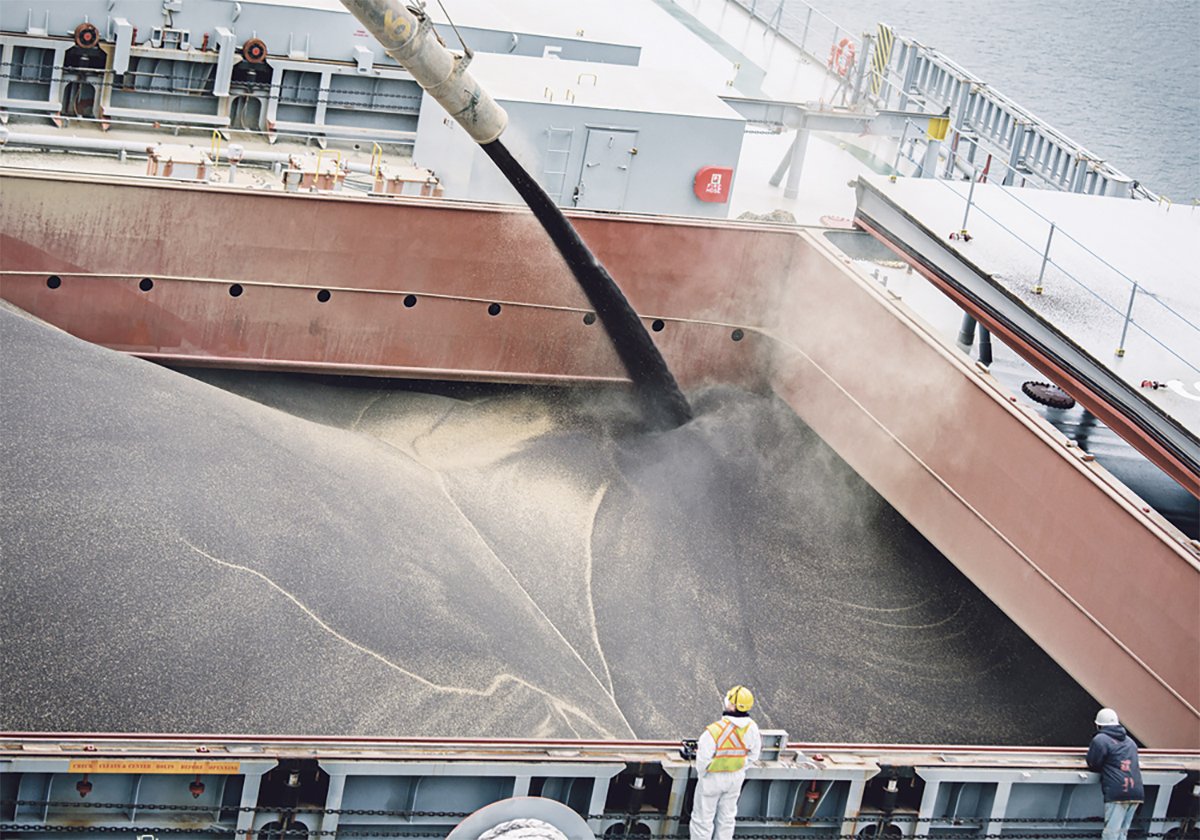Canadian livestock producers and meat exporters welcomed the recent pull back of the loonie to below par status.
The jump to $1.10 US in November was a kick in the teeth to the livestock industry, already suffering from high feed costs, the earlier rally in the loonie and the reorganization of the Canadian hog slaughter sector.
The Canadian currency has now retreated, trading early this week around 99 cents US. Falling crude oil prices, worries that the slowing American economy would also hurt Canadian economic activity and a cut in the Bank of Canada’s lending rate fueled the retreat.
Read Also

Exports off to a slow start after last year’s torrid pace
Canadian grain, oilseed and pulse exports are off to a slow start, but there are some bright spots, according to the Canadian Grain Commission’s most recent weekly export data report.
But a couple of Canadian banks think the loonie will keep flying in 2008, at least at a low altitude.
Scotiabank and CIBC see the loonie climbing back above the U.S. dollar and staying there through 2008.
Both believe the U.S. dollar’s decline is not over because non-Americans who hold trillions of dollars in American currency want to diversify their holdings into other currencies to reduce exposure to the American economy, which is suffering from a credit crunch linked to housing market problems.
The CIBC says the weight of this reallocation will likely shift to other currencies that did not rise as high as the loonie this year. The focus will shift away from the loonie, euro and Australian dollar and toward the Chinese yuan, OPEC currencies and Japanese yen.
But CIBC and Scotiabank forecast the Canadian dollar should remain strong at about $1.05 US. Because Canada is an oil exporter, rising crude prices support the loonie. Oil has recently fallen back, but CIBC expects prices will average $100 US per barrel later in 2008. Scotiabank thinks oil will be volatile but could ease slightly, which could yet help the Canadian dollar because it could boost global economic growth.
The strong dollar hurt Canada’s trade surplus recently, but that should correct itself in coming months thanks to continuing strong demand for Canada’s commodities.
Other banks are not quite so bullish on the loonie.
RBC’s economics department forecasts the loonie above par for the first two quarters of 2008 and close to par in the second half.
Of the big four banks, the Bank of Montreal is the only one that sees the loonie dropping below par for most of 2008, but its forecast remains above 95 cents US.
















